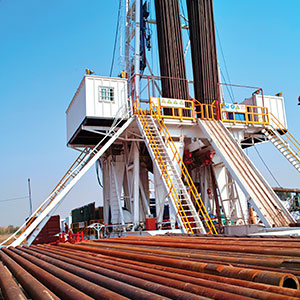
|
|
Tools, technology and pipe handling have all changed in the years columnist Wayne Nash has worked in the Bakken. Source: iStock |
When I got here, I lived in a camp 22 miles from the shop, down US 85. Even though it was, and is, a main road that runs border to border, it was a nightmare here. With only two lanes, and over 100,000 vehicles a day (mostly trucks), the 22-mile trip to the shop often took well over an hour. At the time, it was a year round problem. During the summer, they were frantically trying to expand the roads and bridges and that caused inevitable delays. It’s a pretty sure sign you are not making time when you are passed by a vibratory roller.
During the winter, weather plays a big part of travel delays. It usually frosts about Sept. 15 and by October the world is pretty well frozen for the duration. This is the time of freezing rain, sleet and black ice. Add to this the fact that lots of people come up here to work from places like Texas and Louisiana, and have never seen such conditions — let alone driven in them. I’m always amazed when I am creeping along in 4-wheel drive at 30 mph watching for black ice, and some young roughneck comes by me at 60 mph in a 2-wheel drive car. I know with certainty he is going to be the first one at the scene of the crash.
We used to rate that stretch of Highway 85 by how many wrecks we saw on the road in the morning.
“How’s the road?”
“Oh, it’s a 3.”
Or it’s a 5, or an 8. I’ve seen as many as 14 trucks in the ditch on that stretch of road in one morning. One morning, I was creeping along watching for ice. There was a small car behind me, tailgating, weaving around and blowing the horn. Passing was impossible for a few miles, but they finally found a place to pass. They went by, all friendly like, giving me the middle-finger salute. Sure enough, a couple miles up the road, they were in the ditch upside down and standing there wondering what happened. I pulled off and asked them if they were OK. They said “yes.” So I told them, “If yer gonna be stupid, ya gotta be tough,” and drove off. The least they could do is put their license plates on upside down so we could read them! The state is now making that stretch of road a four lane. That will be a great relief.
I am also seeing great changes in the rigs I work on. Just a few years ago, almost all land rigs were mechanical, Kelly-drive rigs. The driller stood in the weather, on the brake handle and actually operated clutches, brakes, valves, etc., with his hands. Now, the rigs are mostly computer controlled, electric, top-drive rigs. The driller sits in a heated cabin in an easy chair, and operates the draw-works with a joy stick, and the pumps, etc., via touch screens. I’m beginning to suspect that you can’t get a job as driller until you’ve mastered level 5 on Grand Theft Auto. I was recently on a rig that was essentially wireless. Almost everything was controlled by a series of wi-fi networks. Every parameter was computerized and the info sent, via satellite, to the front office. This makes it easier for junior assistant, trainee engineer interns, who don’t know which end of the derrick goes up in the air, to second guess my job. Apparently, they can even see down-hole — all the way from Houston! I shouldn’t complain, though. I get paid by the day, and my granddaughter wants a new pony.
Another modern innovation is pipe handling. I still see actual pipe tongs on some rigs, but the ability to “make ’em bite” is getting to be a lost art. Now, the pipe is made up by a giant robot called, generically, an ST-80. The units are very strong and accurate, but speed is not their forte. Also, they tend to completely smash some of my more delicate tools. It seems like deep trips can now be timed with a calendar rather than a watch. But, it is safe. Some rigs even have robotic derrick hands so the real derrick hand can sit in another easy chair next to the driller and rack back pipe in close proximity to the coffee pot.
It’s all enough to make me wonder what rigs will be like by the end of my career. I’ve been at it for quite a while, and I’ve never seen technology move so fast. About the time we get used to a new piece of equipment or technique, it gets updated with more bells and whistles. But, I wouldn’t trade it for anything, except seeing Lottie a little more often. Maybe someday I can run these jobs from my back porch in Georgia via the internet. Until then, I will enjoy the summers and endure the winters that make the siege of Stalingrad look tame.
For more Wayne Nash columns, visit www.thedriller.com/wayne.




Report Abusive Comment